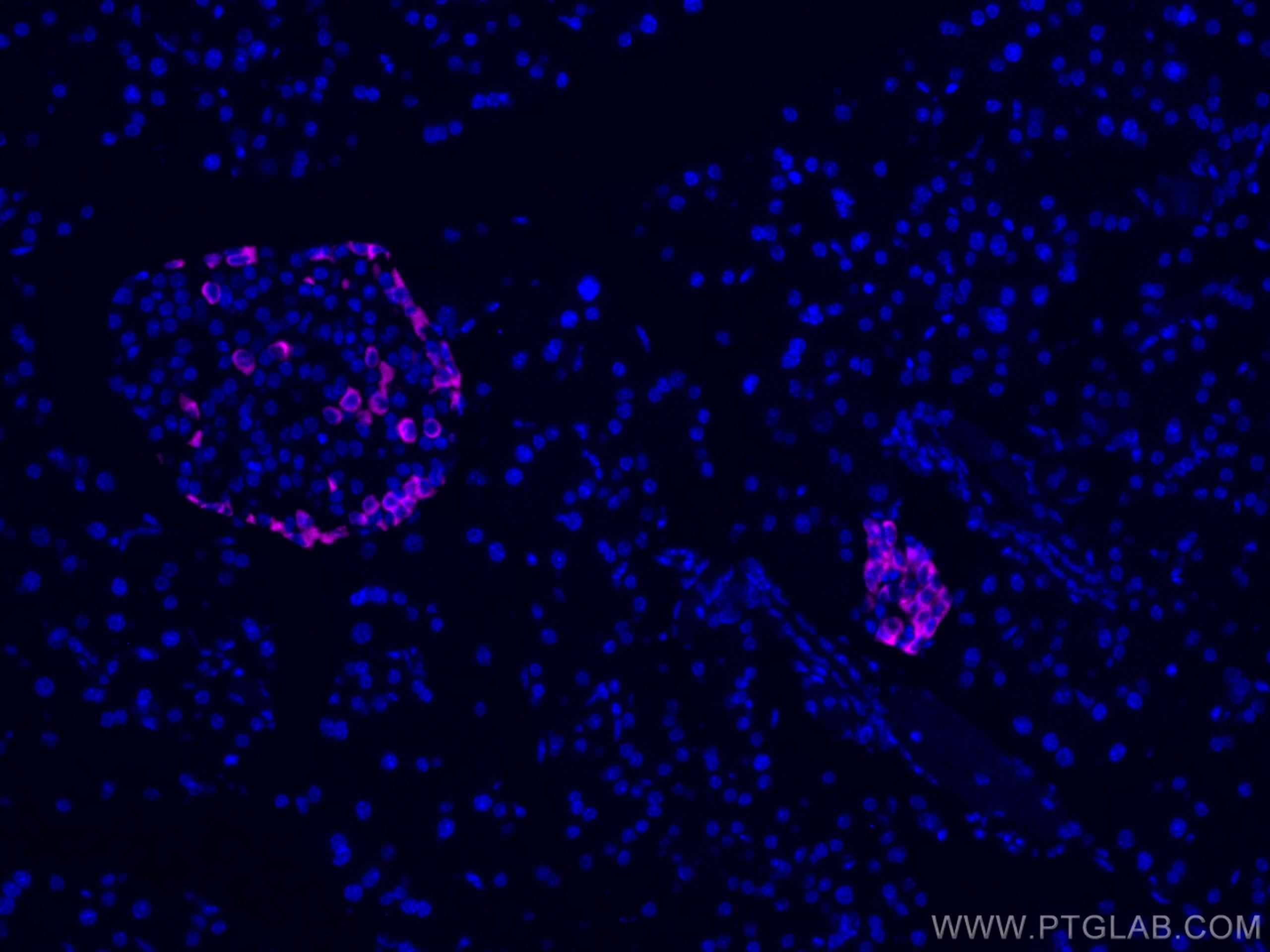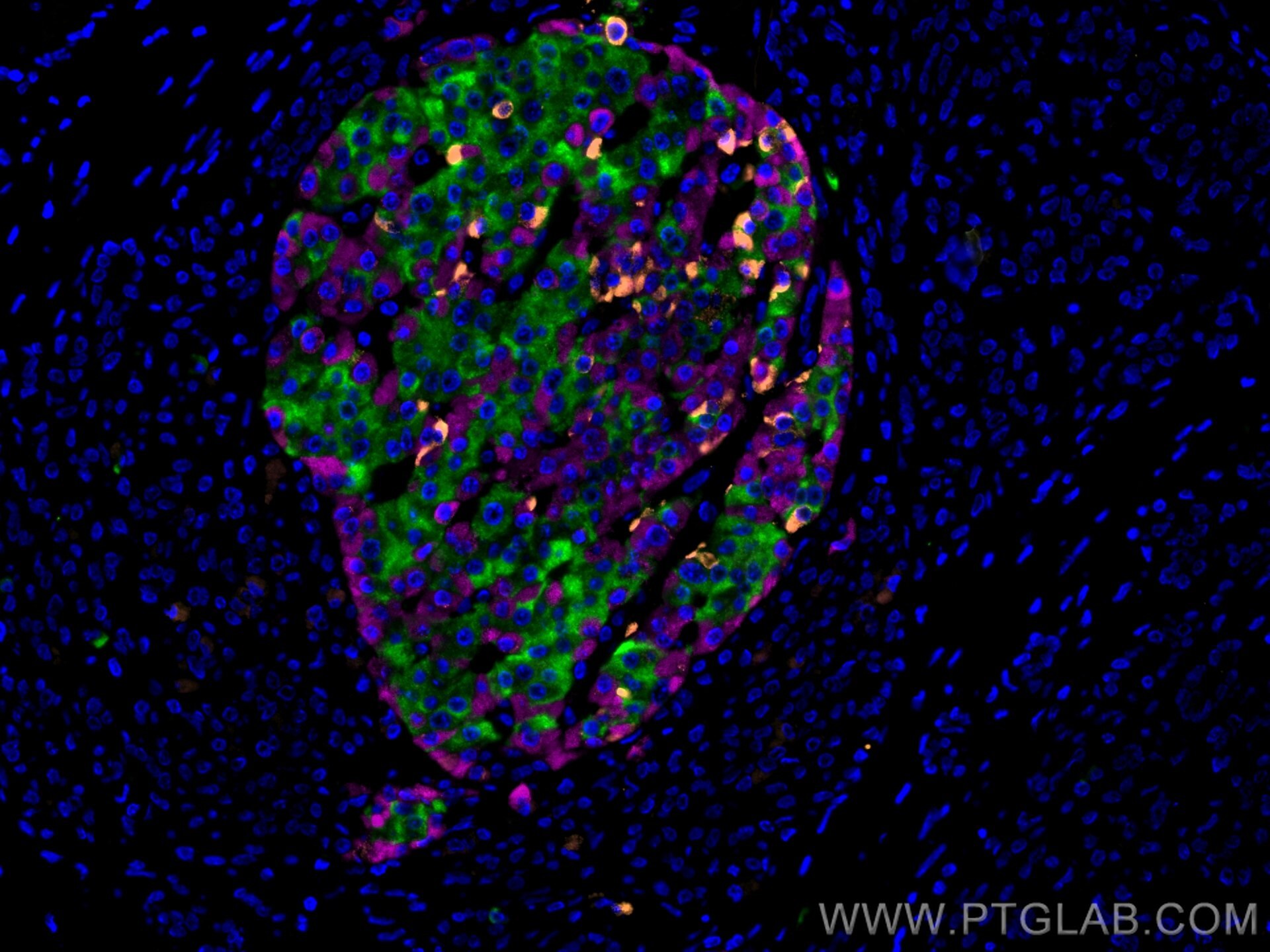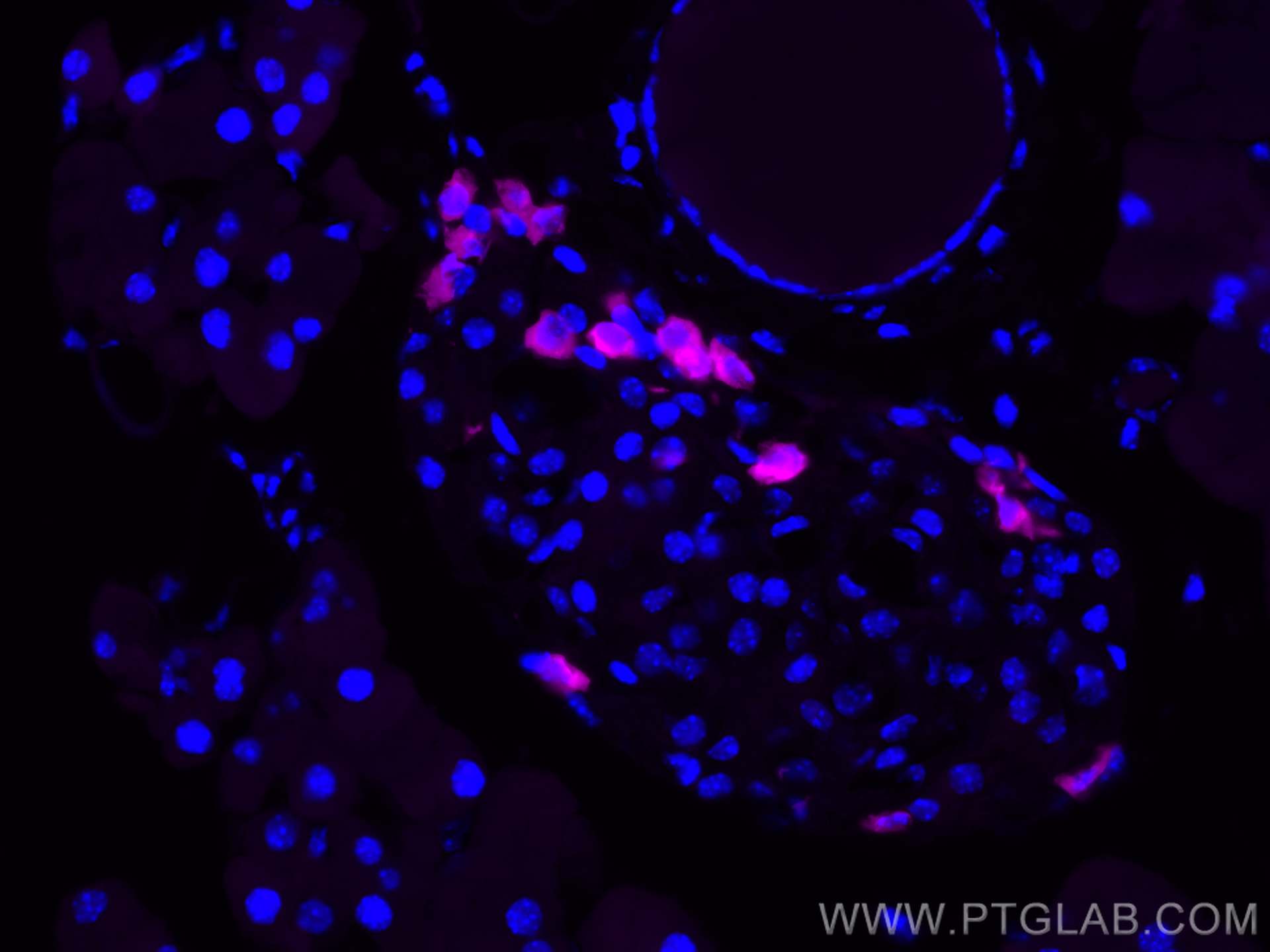Glucagon Polyklonaler Antikörper
Glucagon Polyklonal Antikörper für IF
Wirt / Isotyp
Kaninchen / IgG
Getestete Reaktivität
human, Maus, Ratte
Anwendung
IF
Konjugation
CoraLite® Plus 647 Fluorescent Dye
Kat-Nr. : CL647-15954
Synonyme
Galerie der Validierungsdaten
Geprüfte Anwendungen
| Erfolgreiche Detektion in IF | Maus-Pankreasgewebe, humanes Pankreaskarzinomgewebe |
Empfohlene Verdünnung
| Anwendung | Verdünnung |
|---|---|
| Immunfluoreszenz (IF) | IF : 1:50-1:500 |
| Sample-dependent, check data in validation data gallery | |
Produktinformation
CL647-15954 bindet in IF Glucagon und zeigt Reaktivität mit human, Maus, Ratten
| Getestete Reaktivität | human, Maus, Ratte |
| Wirt / Isotyp | Kaninchen / IgG |
| Klonalität | Polyklonal |
| Typ | Antikörper |
| Immunogen | Glucagon fusion protein Ag8677 |
| Vollständiger Name | glucagon |
| Berechnetes Molekulargewicht | 180 aa, 21 kDa |
| GenBank-Zugangsnummer | BC005278 |
| Gene symbol | GCG |
| Gene ID (NCBI) | 2641 |
| Konjugation | CoraLite® Plus 647 Fluorescent Dye |
| Excitation/Emission maxima wavelengths | 654 nm / 674 nm |
| Form | Liquid |
| Reinigungsmethode | Antigen-Affinitätsreinigung |
| Lagerungspuffer | BS mit 50% Glyzerin, 0,05% Proclin300, 0,5% BSA, pH 7,3. |
| Lagerungsbedingungen | Bei -20°C lagern. Vor Licht schützen. Nach dem Versand ein Jahr stabil. Aliquotieren ist bei -20oC Lagerung nicht notwendig. 20ul Größen enthalten 0,1% BSA. |
Hintergrundinformationen
Background
Glucagon is a protein cleaved from a precursor protein encoded by the GCG gene. The distinct peptides formed from this precursor include Glucagon, Glucagon-Like Peptide 1 (GLP-1), Glucagon-Like Peptide 2 (GLP-2), and oxyntomodulin. Glucagon is essential in maintaining blood glucose homeostasis and therefore has a key role in Type 1 and Type 2 diabetes.
What is the molecular weight of Glucagon?
21 kDa. Glucagon is composed of 180 amino acids and is a ligand for a specific G-protein coupled receptor (GPCR).
Where is it expressed?
Glucagon is a hormone secreted by the pancreas, in the α cells of the islets of Langerhans (PMID: 18880761). GLP-1, GLP-2, and oxyntomodulin are secreted by gut endocrine cells of the GI tract and also by selected neurons in the brain. These secreted proteins are transported to the target organ in plasma.
What is the function of glucagon?
The regulation of blood glucose levels is controlled by a balance of the hormones INS and glucagon in a negative feedback loop. A drop in blood glucose, or hypoglycemia, stimulates the release of glucagon. This initiates a cascade of signals, ultimately causing the conversion of stored glycogen into free glucose in a process called glycogenolysis, which takes place in liver and muscle cells. Glucagon can also stimulate gluconeogenesis in the liver, the process of forming glucose from non-carbohydrate sources such as amino acids (PMID: 13477815).
What diseases are associated with glucagon?
Glucagon is key in homeostasis of blood glucose and maintaining the balance between hyperglycaemia and hypoglycemia. It is therefore important in the study of Type 1 and Type 2 diabetes mellitus, where dysfunction of the pancreatic cells leads to a deregulation of blood glucose levels (PMID: 19326096). In both forms of the disease, glucagon secretion is impaired, from too much being secreted during hyperglycaemia, to too little being released to normalize hypoglycemia (PMID: 18197838).
Protokolle
| Produktspezifische Protokolle | |
|---|---|
| IF protocol for CL Plus 647 Glucagon antibody CL647-15954 | Protokoll herunterladen |
| Standard-Protokolle | |
|---|---|
| Klicken Sie hier, um unsere Standardprotokolle anzuzeigen |




